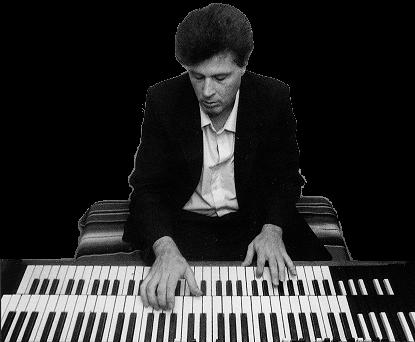

Revisiting the "tone wheel" sounds of the Hammond organ has been the preferred choice for serious Jazz organists so far this decade. There can be no denying its sustaining power both sonically and symbolically. Within this electromechanical device (coupled with a Leslie tone cabinet) lies the tradition of urban America's "Soul Jazz" in all its glory. Organist Bill Heid revels in this glory. He is, for my years, conceptually linked to two major players, Larry Young and Don Patterson, but his love of Jazz organ encompasses the myriad of players and events that surround the fifty-plus year history of this instrument in Jazz.Beginning in his hometown of Pittsburgh, Bill played in both piano and organ groups pumping out mostly blues that later led to providing accompaniment for such notables as Jimmy Witherspoon, Muddy Waters, John Lee Hooker and Son Seals. For Chicago's Alligator Records, he recorded with Fenton Robinson, Roy Buchanan and blueswoman KoKo Taylor, and later two LPs for MCA/IMPULSE guitarist Henry Johnson, while soaking in inner city Jazz from its Hammond organ crucible. His quest for musical knowledge found him "on the road" literally when in 1963, in search of rare 78-rpm Rhythm & Blues record, he began a 32 year "career" of hitchhiking in 48 U.S. states, Canada, Mexico, the Philippines, Japan, Korea, China and the Thailand/Cambodia border. His 400,000 documented miles of thumbing gained a spot in the Guinness Book of World Records. Some of his journeys lead him to the "chicken houses" and organ rooms of major cities where he interned with Jimmy Ponder, Sonny Stitt, David Newman, Ira Sullivan and Mickey Roker, and as a pianist with Don Patterson.
"I approach this thing like total war and have been lucky to have avoided a day job for almost 31 years," he declares. Bill's victories have come via knowledge gained from the masters he encountered. "Pittsburgh was a great place to grow and learn. At the Hurricane Bar, I heard Jimmy Smith, Jack McDuff, Jimmy McGriff, Lonnie Smith, Don Patterson, and all the great organ cats; and up the street at the Crawford Grill, all the great piano groups - Freddie Hubbard, Max Roach, Gene Harris, Bobby Timmons, Wynton Kelly and all those bad cats. Sometimes I'd get the privilege of sitting in with some of those groups. I'd always pester them for information and looking back, every one of those cats were kind and helpful...like fathers." Heid was schooled by the best organ drummers - Joe Dukes and Billy James - while spending time in Chicago and later in New York, he met and hung out with his mentor, Larry Young, often visiting the family-owned Newark Club.
Bill feels much of the music he presents in his debut session for Westside is heavily influenced by Larry Young, "a beautiful, humble person," with the two exceptions being "I Remember Don" and "Blues for Duck" which both give nods to "the nutty genius of Don Patterson."
With him on this date are tenor saxophonist Scott "E Dog" Petersen and drummer Randy Gelispie. Scott's reed work often creates moments of welcome tension that push this music to those edges that Bill prefers. Petersen has worked with Dizzy Gillespie, Milt Hinton, and his six-year association with the J.C. Heard Big Band proved to be an invaluable experience.
Randy, "my most important musical father," worked and recorded with many Jazz legends including Wes Montgomery, Dinah Washington, Ray Charles and Tommy Flanagan, and appeared on Prestige LPs with Sonny Stitt and Pat Martino.
The music is as adventurous as it is anachronistic. It harks back to an exciting time for Jazz organ when the standard set by Jimmy Smith was being ferociously challenged. More importantly, it comes from the musical mind of an inner city veteran whose experimental learning provided him with the "real deal". Nothing supplants authenticity...you deeg? I know you'll find more Jazz organ in this recording than you could have imagined, but believe what you hear. Bill Heid has some of the best stuff offered on what Don Patterson referred to as "the box".
Bill's own explanations of some titles are offered here: "This is My Rifle" refers to the Marine's attitude toward their weapon. "In this case, my weapon is the B-3," he quips. Lawrence of Newark is self-explanatory; "a Larry Young-istic Blues"; "Rooksie" is named after a homeless little puppy he found and adopted in Osaka, Japan while "Hokkyo" means "insane" and "Nikushimi" means "hatred". (My interpretations of this has to do more with the degree of intensity and emotion in Bill's music rather than any pejorative). "She's From Wales", again is named after a dog, "my seventeen year old Welsh Corgi," and is presented as a tribute to Jimmy Smith, "truly the Charlie Parker of the Jazz organ."
Bill often speaks in amusing anecdotal phrases which tend to spice up his already heavily seasoned music. His analogy of the music industry and war is clever while I know innocuous. I do feel, however, that there will be few survivors after this warrior empties his B-3!
Pete Fallico - KUSP, Santa Cruz, California
| 1. | This Is My Rifle | 5:46 |
| 2. | Lawrence Of Newark | 5:14 |
| 3. | Rooskie | 4:35 |
| 4. | Nibbling | 4:53 |
| 5. | I Remember Don | 6:45 |
| 6. | Hakkyo | 6:44 |
| 7. | Sparring | 6:53 |
| 8. | No Restraint | 6:59 |
| 9. | Blues For Duck | 7:10 |
| 10. | Nikushima | 7:19 |
| 11. | She's From Wales | 5:32 |
| RealAudio (3.0 @ 28.8) |
| Bill Heid | hammond organ |
| Scott "E Dog" Peterson | tenor saxophone |
| Randy Gelispie | drums |
|
All compositions by Bill Heid
(Corgiville Music / Barney Music) BMI Recorded October 25, 1994 in Detroit, MI. © 1996 Westside Records, Inc. |